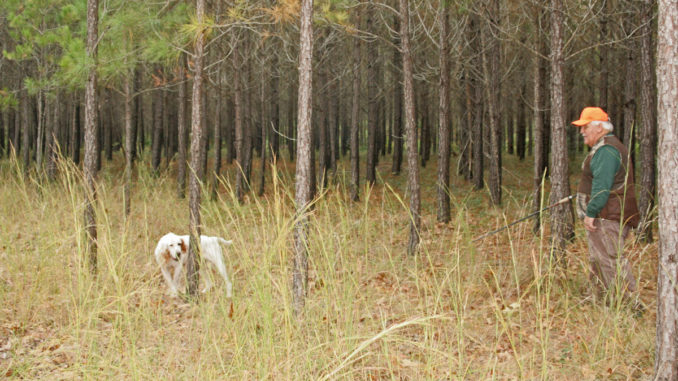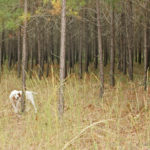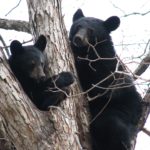
More than a million acres of public land is available to South Carolina hunters.
Wildlife Management Areas are the lifeblood for many South Carolina sportsmen, providing places for hunters to target various species. Many WMAs receive a lot of hunting pressure, but ample opportunity exists for those willing to put in the effort to find the right habitat for the specific species they target.
Billy Dukes, chief of wildlife for the S.C. Department of Natural Resources, said WMAs across the state are varied and offer a diversity of hunting opportunities for many game species.
“Wildlife Management Areas are located throughout the state and provide hunters with a great opportunity to hunt for most all game species if they research the options on individual WMAs,” he said. “There’s about 1.1 million acres of land available in this program, and a WMA permit is needed to legally hunt.”
Dukes said big-game species such as deer and turkey are very popular, but bear hunting is a unique opportunity in specific areas. Dove hunters have around 45 managed dove fields to hunt on WMAs, and a number of public-hunting areas are managed specifically for waterfowl to offer exceptional hunting. Depending on the WMA, hunters can find ideal habitat for small-game species such as squirrel, rabbit, quail, woodcock and even hogs and coyotes.
Here’s a survey of top WMAs for different game species:
Whitetail deer
According to Charles Ruth, the chief deer and turkey biologist for SCDNR, deer are one of the most-popular species that hunters target on WMA lands on a statewide basis.
“Huge chunks of land in the national forests are available to hunters though the WMA programs,” Ruth said. “The Francis Marion National Forest in the Lowcountry, with a quarter million acres, as well as three separate and large chunks of the Sumter National Forest in the piedmont and mountains, provides hunters with large areas to hunt deer. Many successful deer hunters prefer to have a large amount of land to hunt. For those willing to do the legwork and go deep, away from the majority of hunters, some exceptional deer hunting can be found.”
Ruth said that the data for deer harvest by county can accurately portray relative WMA hunting success. He said the harvest data includes WMAs in a county harvest total.
The statewide average for deer harvested on public and private lands was 9.6 per square mile in 2014.
“In the Central Piedmont Hunt Unit where the Sumter National Forest comprises a big chunk of the area, 11.4 deer per square mile were harvested, an extremely good harvest rate and well above the statewide average,” Ruth said. “Hunters in the Western Piedmont Hunt Unit harvested deer at the rate of 9.4 deer per square mile, and in the Mountain Hunt Unit a 5.1 deer per square mile harvest rate was recorded.”
Ruth said that a second reason deer hunting is so popular is that some areas are specifically managed for good deer hunting, and some of these area are hunted by a drawing from those who apply for specific deer hunts.
“Some of the very best draw-hunt areas include the Webb Center, Hamilton Ridge, Donnelley, Bear Island and Bonneau Ferry,” Ruth said. “They are hunted via a draw-hunt process that takes place earlier in the year, and this program gets high response from hunters because of the quality of deer hunting. Hunters can begin planning for those areas for the 2016 season and applications are usually out by July each year.”
Ruth said a couple of small WMAs produce excellent harvests every season.
“Based on the 2014 harvest, some WMAs in the coastal plain had very good numbers, included the 2,000-acre Botany Bay WMA with a 10.2 deer-per-square-mile harvest rate. Oak Lea WMA is about the same size and had an 18.0 deer-per-square-mile rate, and Cross Generating Station had a 14.7 deer-per-square-mile rate.”
Wild turkey
Ruth said turkey hunting regulations on WMAs will change in the 2016 season but will not match opening and closing dates passed by the state legislature for the new statewide seasons.
“The statewide private-land season is set for March 20 through May 5,” Ruth said. “The harvest limit is now at three gobblers, down from five for the season.
“The traditional April 1 opening day will remain for WMAs, but the season will extend to May 5 unless otherwise noted for a specific WMA,” Ruth said. “Some WMAs have specific seasons and guidelines, such as being open only on certain days or for specific hunts, similar to what’s been done in the past.”
Black bear
Charles Ruth said two distinct populations of black bears are found in South Carolina, and hunting on WMAs is available for both, especially the Sumter National Forest in the Upstate.
“A mountain population exists in the very upper part of the state and (there’s) a coastal population,” Ruth said. “Most hunting opportunities are in the mountain population. Two distinct type of hunting are allowed in the mountain area, with a one-week, still-hunting season first, followed immediately by a one-week season where dogs are allowed.”
Ruth said hunters have to have a bear tag, available from SCDNR. He also said that hunters considering bear hunting need to manage their expectations.
“The hunting is in rugged terrain, and to have a realistic chance of success, a hunter needs to do a lot of scouting and legwork,” he said. “Look for bear sign in the form of tracks and scat and forage such as hickory nuts and acorns. Going bear hunting on a whim is not a good way to be successful. Even with planning and preparation, it’s not easy, but it is an exciting opportunity that dedicated hunters have available for a totally different hunting experience.”
Ruth said the coastal hunting is a draw-only hunt and only a limited number of tags are available.
Waterfowl
According to biologist Dean Harrigal of SCDNR, waterfowl hunting on WMAs is divided into two classes: Class I and Class II. He said Category I areas encompass WMAs subject to a draw hunts, with applications usually available by mid-September.Category II sites do not have a draw-hunt quota and are open to hunters on a first-come, first-served basis. He describes them as quality areas; hunters can expect good hunting, but probably not as what would be found on the draw hunts.
Data compiled for the 2014-15 season indicated some productive hunting. Hunters finished the season with a total reported harvest of 3,931 birds, an average of 2.0 birds per hunter per day. A total of 1,955 hunters participated in 125 hunts on 16 WMAs that recorded individual hunt data.
According to the report, gadwall accounted for 25 percent of the total harvest, followed by wood ducks, shoveler, green-winged teal and widgeon.
Bear Island WMA near Green Pond had the highest harvest, with 1,252 birds taken by 289 hunters, nearly 40 percent of them gadwall.
“Overall, the season for our waterfowl areas was excellent. The early cold weather fronts we had brought birds into many areas of the state before Christmas and many of our WMAs had consistent hunting all season long.” Harrigal said.
Hunt data was collected on five of the 30 Category II WMAs managed for waterfowl. Hunters reported a harvest of 702 birds on these areas, the vast majority coming from Hickory Top Greentree Reservoir. The average for 1,054 hunters was 0.7 birds per hunter; wood ducks accounted for more than 82 percent of the bag.
Small game
Dukes said a tremendous opportunity for hunting small game exists on WMAs across South Carolina.
“We have outstanding programs and great hunting for small game,” he said. “It’s important to understand that not all WMAs are created equal in terms of producing good hunting, but even small WMAs are not necessarily single-species areas. We have WMAs large enough to have enough upland and bottomland areas where multiple species may be found in good numbers.
“Quail have specific requirements in terms of habitat to thrive. Areas where you find open pine stands with low-growing understory and areas that are frequently managed with controlled burns are ideal,” Dukes said. “We do have quite a bit of these type areas on our WMAs, but they are not found in every WMA.”
Dukes said the trio of the Webb Center, Hamilton Ridge and Palachucola WMAs, all in Hampton County top the bobwhite list. He said Crackerneck, Marsh, Draper and the Canal WMAs offer better-than-average quail hunting for public lands.
“Also, some portions of the Francis Marion Forest can be outstanding,” he said. “Look for areas that have controlled burns on a regular basis as key areas,” he said.
Woodcock are an often-overlooked resource on WMAs.
“Good hunting for woodcock exists on some of our WMAs,” Dukes said. “They do have very specific habitat requirements, but they are found in good numbers on both the Sumter National Forest and portions of the Francis Marion National Forest.”
Dukes said that unlike most other shorebirds and marsh birds, woodcock are a forest-dwelling species. He said they are often associated with forested wetlands. A brushy forest understory is the preferred habitat, with swamp privet, holly, switch cane, honeysuckle, peppervine, trumpet creeper, greenbriar and grapes identified as important understory.
Duke’s said old fields, croplands, pasturelands, wet seeps and damp thickets also provide important habitat for woodcock.
SCDNR will manage between 45 and 50 dove fields scattered across the state; Dukes said all are set up for top-quality hunting.
“The vast majority of these prepared fields will offer very good to exceptional dove-hunting opportunities,” he said. “Our staff has an active hand in all of these fields, and we try to maximize the land for the dove resource. It is a very popular sport in our state.
“I would recommend anyone to check our website (www.dnr.sc.gov/wildlife/dove/fields.html) and find a field close to where they live,” Duke said. “They are well-scattered throughout the state.
“In the Upstate, the Draper tract in York County and the Thurmond field in Union Country are both excellent choices. In more of the mid-state area, the Crackerneck area in Aiken County and Pee Dee Station in Florence County are both very good. In the lower part of the state, the Donnelly WMA in Colleton County is excellent and the Oak Lea Area in Clarendon County usually provides outstanding shooting. Also, the Canal Area in Berkeley County is an exceptional site.”






Be the first to comment